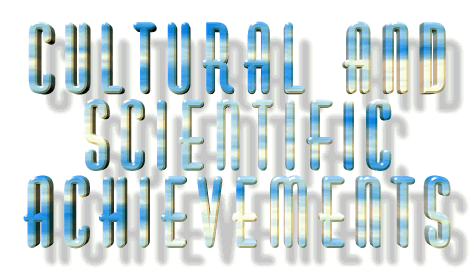
Instructional Goal: Students will know the significant cultural and scientific events associated with the Sumerian civilization.
- Sumerian writing is generally regarded as the first written language.
- Sumerian writing was called "Cuneiform".
- Tools included clay tablets and a wedged shaped stylus to produce writing.
- Over 200,000, many from city of Mari, have been preserved.
- Sir Henry Rawlinson deciphered writing after finding the "Rock of Behistun" in present-day Iran.
- Sumerian literature is among the earliest known writings.
- Literature was almost always religious oriented or a historical record of kings.
- The "Gilgamesh Epic" is generally regarded as the greatest literature prior to the O.T.
- Epic poem centered on the heroic tales of a great king.
- Epic is very similar to parts of the O.T. suggesting they were contemporary.
- Hammurabi's law code was the earliest known law code in existence.
- The code contained 282 laws.
- Code was based on retribution, not justice.
- Code was not fair between social classes.
- Social Classes were similar to those in other early civilizations.
- Upper class contained nobles, priests, government officials and warriors.
- Merchants, traders and artisans made up a middle or "Freeman" class.
- Serfs and slaves made up majority of population and were responsible for all manual labor.
- Sumerian society was "Matriarchal" and women had a highly respected place in society.
- Sumerian religion was the unifying and dominant force, which provided the basic value structure of the society.
- Polytheism, animism, and anthropomorphism characterized Sumerian civilization.
- Sumerians had a strong belief in life after death.
- Sumerians also believed that each person had a "Ghost" which followed the individual at all times.
- Earth was looked upon as a scary and gloomy place.
- Priests used divination (fortune-telling), astronomy and temple prostitution to control society.
- Sumerian gods were cruel and capricious.
- Sumerian pantheon included (A) Enlil: ruler of all other gods represented by the air or wind; (B) Anu: the Sky god; (C) Enki or Ea: god of the earth and water; (D) Ishtar: referred to as the "Whore of Babylon" in the O.T., she was the goddess of love and fertility.
- Sumerian art and architecture was ornate and complex.
- Art was primarily used for religious purposes.
- Painting and sculpture was the main median used.
- while most cities were simple in structure, the ziggurat was one of the world's first great architectural structures.
- Sumerians developed a complex system of sewers and flush toilets to rid cities of waste and unhealthy affects of swamps.
- Sumerian scientific achievements were important to the modern world.
- Sumerians invented the wheel C. 3700 BC.
- Sumerians developed a math system based on the numeral 60, which was the basis of time in modern world.
- Earliest concepts in algebra and geometry were formulated.
- A system of weights and measures were developed which served the ancient world until the Roman period.
- Many of the constellations were mapped by the Sumerians.
- The Sumerian civilization ended when the Tigris Euphrates valley was overrun by the Hittites C. 1600 BC
Assignment: Students will read "The Gilgamesh Epic"

